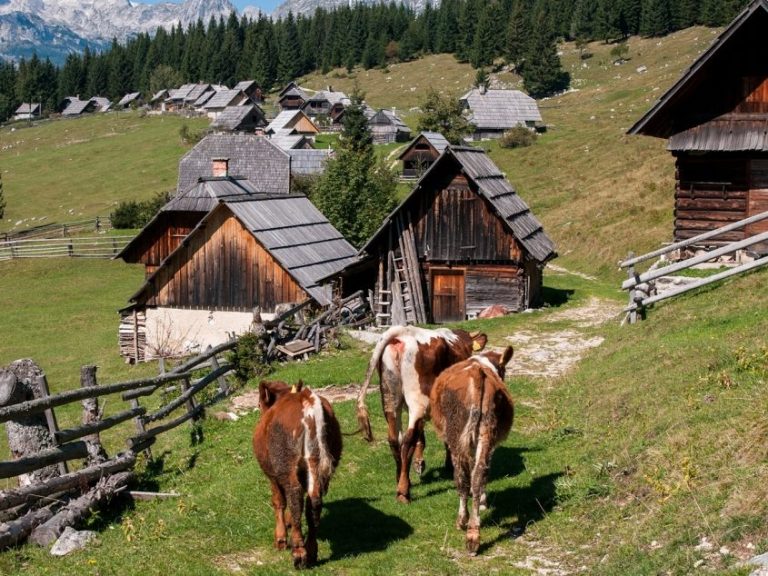Partners
Project Partners
Julian Alps Biosphere Reserve (Triglav region), Slovenia
The Julian Alps is a region from the Southern Limestone Alps where north eastern Italy joins Slovenia. It was declared the first biosphere area in Slovenia in July 2003. The Biosphere Reserve constitutes an important Alpine corridor, notably for large carnivores as well as birds. In the agricultural field, there are prestigious local product development activities (pumpkin, garlic, bread, flour and truffles...) that have led to the recognition of three Slow Food presidia (Resia Garlic, “Pan di Sorc” (Bread from Sorc) and Latteria Turnaria Cheese) and several manufacturing processes and preparations have been inserted into the MIPAAF list of traditional agri-food products.
Turizem Bohinj
Turizem Bohinj is a modern destination organisation, which acts as an interest organisation of all public and private sector tourism entities. In 2018, Tourism Bohinj took over the coordination of the Community of Municipalities of the Julian Alps Biosphere Region. The contractual community of 12 municipalities and the Triglav National Park is based on the development plan of the Julian Alps Biosphere Region and was created with the aim of cooperation between tourist areas and sustainable management of the Julian Alps Biosphere Region. https://www.bohinj.si/en/

Bio Região São Pedro do Sul (Centro region), Portugal
There is a team based in the municipality working with local entities (schools, parishes, tour operators), farmers, and producers in the pursuit of a sustainable food system: producing better food, informing consumers about the importance of local and seasonal products and demonstrating the centrality of agriculture in people’s lives. Another strategy involves preserving local varieties and breeds, such as seeds varieties and “Arouquesa”, our local cattle breed, both important features of our territory. We also aim to connect producers and consumers with our local market and several events, that bring together gastronomy, agriculture and culture.

Upper Lusatian Heath and Pond Landscape
Biosphere Reserve, Germany
Biosphere Reserve Administration at Staatsbetrieb Sachsenforst
The UNESCO-Biosphere Reserve is situated in the green heart of Lusatia in Eastern Germany. The Upper Lusatian Heath and Pond Landscape has been shaped for many centuries by human use. The diversity of habitats in the Biosphere Reserve offers a wide variety of conditions for the existence of many species. The existence of more than 5,000 animal and plant species has been verified. More than 1,200 species are currently registered in Saxony’s Red List.
Biosphere Reserve (Administration at Staatsbetrieb Sachsenforst)
The Biosphere reserve is a model region for sustainable forms of land use and important reservoir of genetic resources. It is therefore important to create good conditions for the protection of old varieties and landraces of cultivated plants and endangered domestic animal breeds. This Biosphere reserve exists for 30 years. The area is predominantly agricultural, with the agricultural land being closely intertwined with mires, dune areas, heaths, swamp forests and dry grasslands. There are 60 villages in the area with around 9.200 inhabitants. https://www.biosphaerenreservat-oberlausitz.de/

nova-Institute is a private and independent research and consulting institute. It is located in Huerth, Germany. We support the conservation and sustainable use of biological diversity in order to develop the potential that biodiversity offers and to promote its acceptance. The networking of biological diversity with other areas of society and professional communication are crucial factors. This involves the further development of fields of action and the establishment of networks at the interfaces between conservation and nature-friendly use. The nova-Institute coordinates this project. It has many experiences in management and organisation of EU projects and long term working experiences in vocational consultation und advice in the field of sustainable rural development and biodiversity and extensive knowhow in the project topic.

S. Pedro do Sul is a rural municipality in the central region of Portugal, with about 15.000 inhabitants. The country's largest spas, which receive around 19.000 users annually, are located here. The territory is part of the international network of Eco Regions, a place where farmers, associations, tour operators and other sectors, together with the local government, assume a joint strategy based on agro-ecological/organic production models.
©2025. All rights reserved.
Wir benötigen Ihre Zustimmung zum Laden der Übersetzungen
Wir nutzen einen Drittanbieter-Service, um den Inhalt der Website zu übersetzen, der möglicherweise Daten über Ihre Aktivitäten sammelt. Bitte überprüfen Sie die Details in der Datenschutzerklärung und akzeptieren Sie den Dienst, um die Übersetzungen zu sehen.
